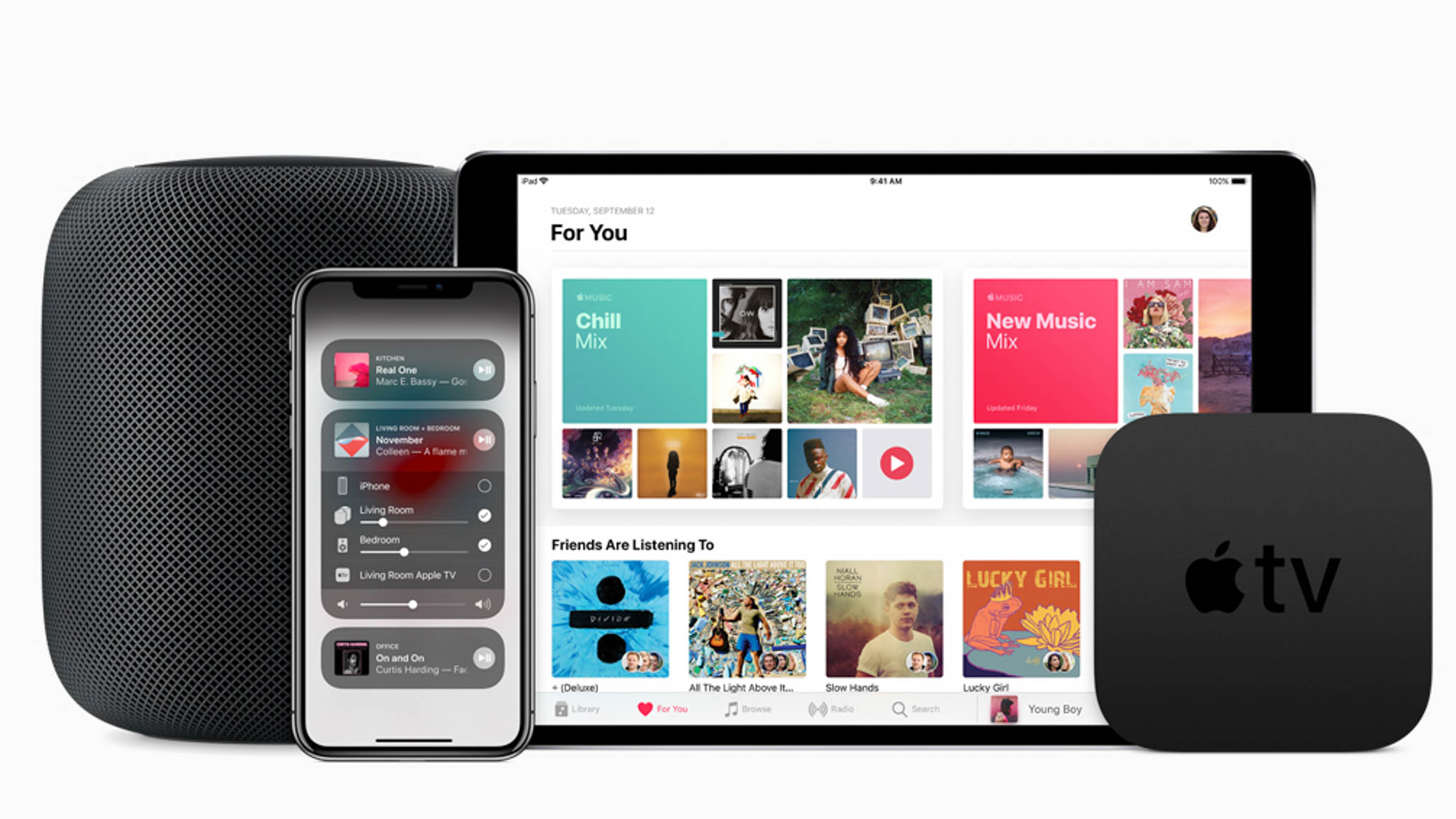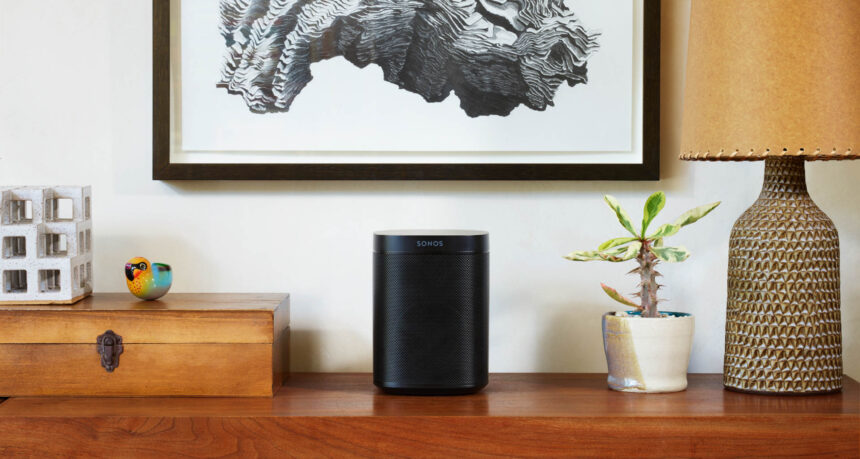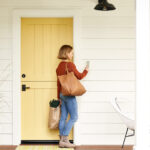Setting up multi-room speaker systems in your house used to be a long, stressful, and expensive undertaking. With all of the cords, bulky or ugly speakers, and endless installation hours, it’s no wonder so many people don’t bother ever setting up a sound system in their home.
Thankfully, smart home technology running Wi-Fi, Bluetooth, Zigbee, or Z-Wave together with advanced software applications now allow us to make our homes smarter and safer. Entertainment systems can be run side-by-side with this technology, enabling us to set up the ultimate music streaming experience. No longer are the days of tangled cords and headaches the norm.

To make music streaming even more enjoyable, many of the latest products also include built-in digital assistants for simple voice control over your tunes.
Here are four simple things you can do to make your home stream your favorite songs effortlessly, as well as recommendations on four voice-activated speakers we love.
Find a Way to Connect
Streaming your music wirelessly will require a good internet connection. Even though streaming music only takes 0.5 Mbps of bandwidth, it can interfere with your other connected devices. Look into getting Wi-Fi range extenders that can help all of your smart home devices connect to your internet connection. Extenders are easy to install and affordable, beginning in the $20 to $30 range. If you’re still having difficulties, test your internet speeds and look into getting a faster connection. Even a slight increase in bandwidth can make all of the difference.
Get Your Music Ready for Streaming
Playing music on your phone, computer, tablet, or gaming system has never been easier. You can download music straight to your device’s internal memory, or you can subscribe to a music streaming service like Spotify or Apple Music. Most artists will even put up their songs for free on YouTube (although you might have to deal with those pesky ads). No matter how you get your music, you need to make sure that you invest in a speaker that can connect to your smart device. Most devices can connect with Wi-Fi or Bluetooth.
Find a Speaker That Fits Your Needs
If you have a current smart home system hub, it’s recommended that you get speakers that are compatible with that brand. For example, if you have a lot of Amazon smart home devices, look into getting Alexa-compatible speakers for your house. Or, if you have Google smart home devices, try one of the Google Home speakers or other Google Assistant-enabled speakers. And if your home is very Apple and Siri centric, look into the Apple HomePod or other Apple AirPlay 2-compatible speakers.
Most major smart home brands will have a dedicated app where you can control, adjust, and regulate all of your devices. Getting speakers that are compatible with a given app will make your music streaming more convenient and enjoyable.
It’s okay if you don’t have a smart home system per se; you can still enjoy all of the benefits of music streaming in your home. It’s essential that you do some research into what type of speaker would be best for you, but here are four top speakers that we recommend:
Bose Home Speaker 500
One of a new breed of wireless speakers designed with built in voice assistants, the Bose Home Speaker 500 includes an onboard Amazon Alexa voice assistant so no other devices are needed to control your music with your voice.
The tabletop speaker has an integrated color LCD display on its front face that delivers information about the content currently playing, and the Bose technology delivers wall-to-wall stereo sound without the need to pair with a second speaker. Bose says they will also add more voice assistants in the future, and have already committed to providing Apple AirPlay 2 support by early 2019. The system also supports Spotify, Deezer, TuneIn, and other services.
Sonos One
From the company that started the wireless multi-room music movement, the Sonos One has the Amazon Alexa assistant built in for voice control over your music. The speaker is the same size as the Sonos Play:1, and can be paired with any other Sonos speaker for stereo sound within a room, and of course works great with other Sonos speakers and sound bars for multi-room audio setups.
The Alexa voice activation features are powered by an array of 6 multi-directional microphones, and the system automatically lowers the volume on all Sonos speakers the instant an Alexa voice command is detected. Sonos supports over 80 streaming services globally, including Apple Music, Deezer, Google Play Music, Pandora, and many others too numerous to list here.
Place Your Speakers Strategically
Every home is unique, and some homes will require more speakers than others. While most quality speakers are lightweight and extremely portable, it can become burdensome to carry a speaker system with you to every room in the house. With that in mind, it would be most beneficial to first place your speakers in high traffic areas in your residence.
However, it’s important to know that you don’t need to break the bank so that you can begin enjoying multi-room music. Start with just a speaker and two, then expand until you have a speaker in all the rooms you desire. You can always purchase more if you feel like your music streaming needs aren’t being met.
Life Beyond Wired Speakers
Technology makes it easy for you to make your home a music playing paradise. There’s never been a better time to integrate entertainment, automation, and security seamlessly for you and your family.







